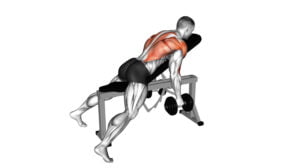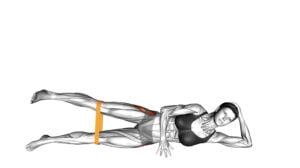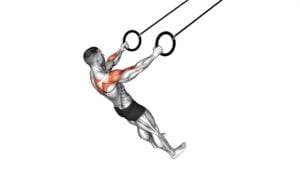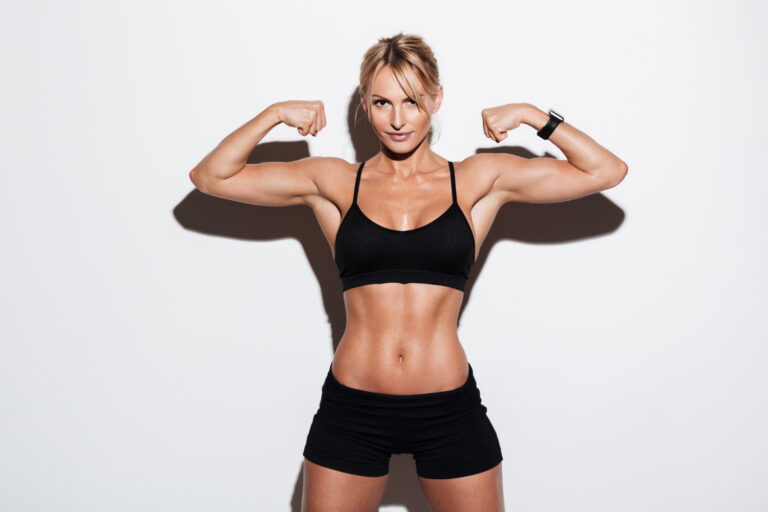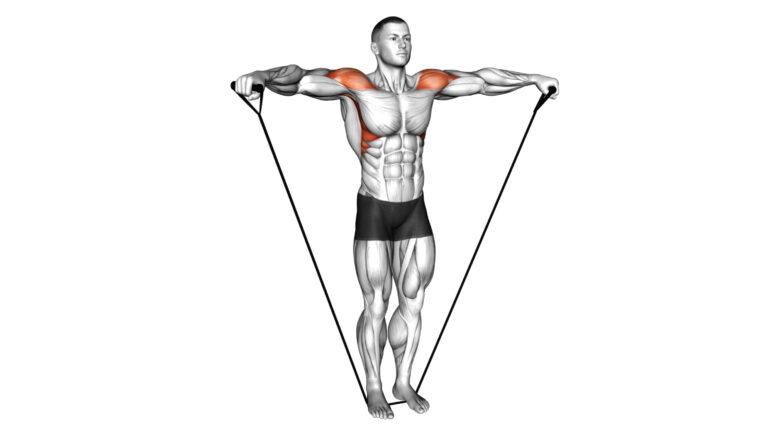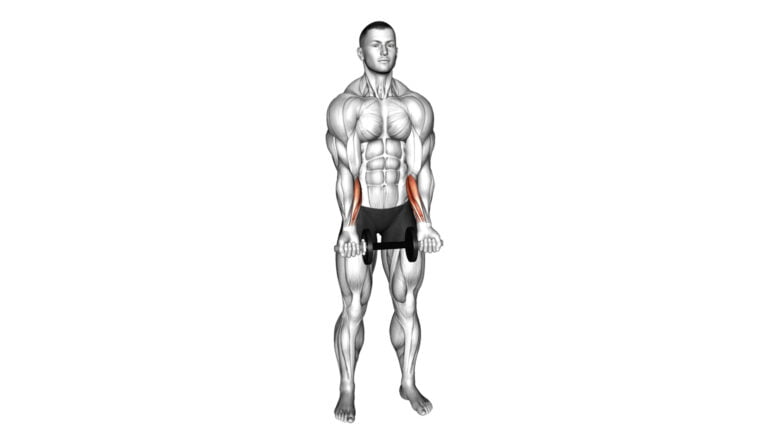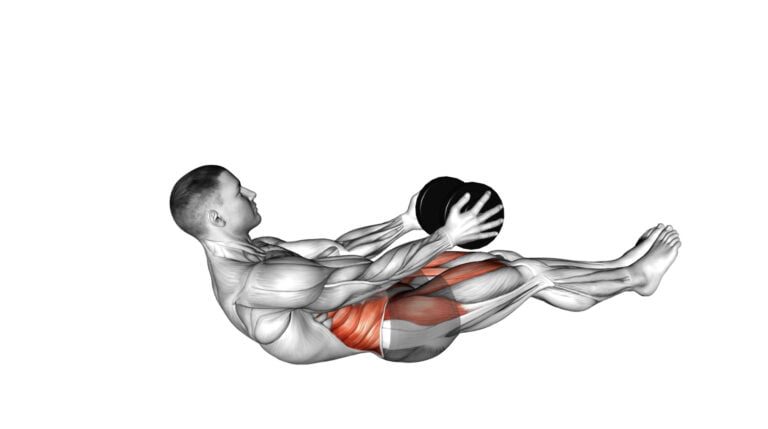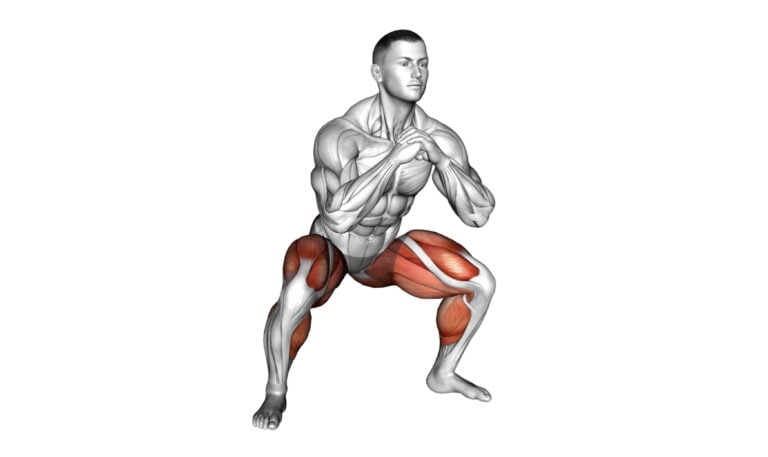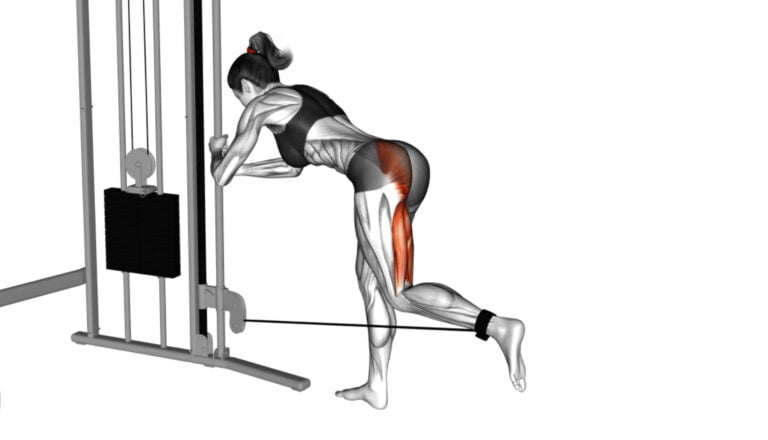10 Teres Major Exercises For Strengthening And Toning Your Upper Body
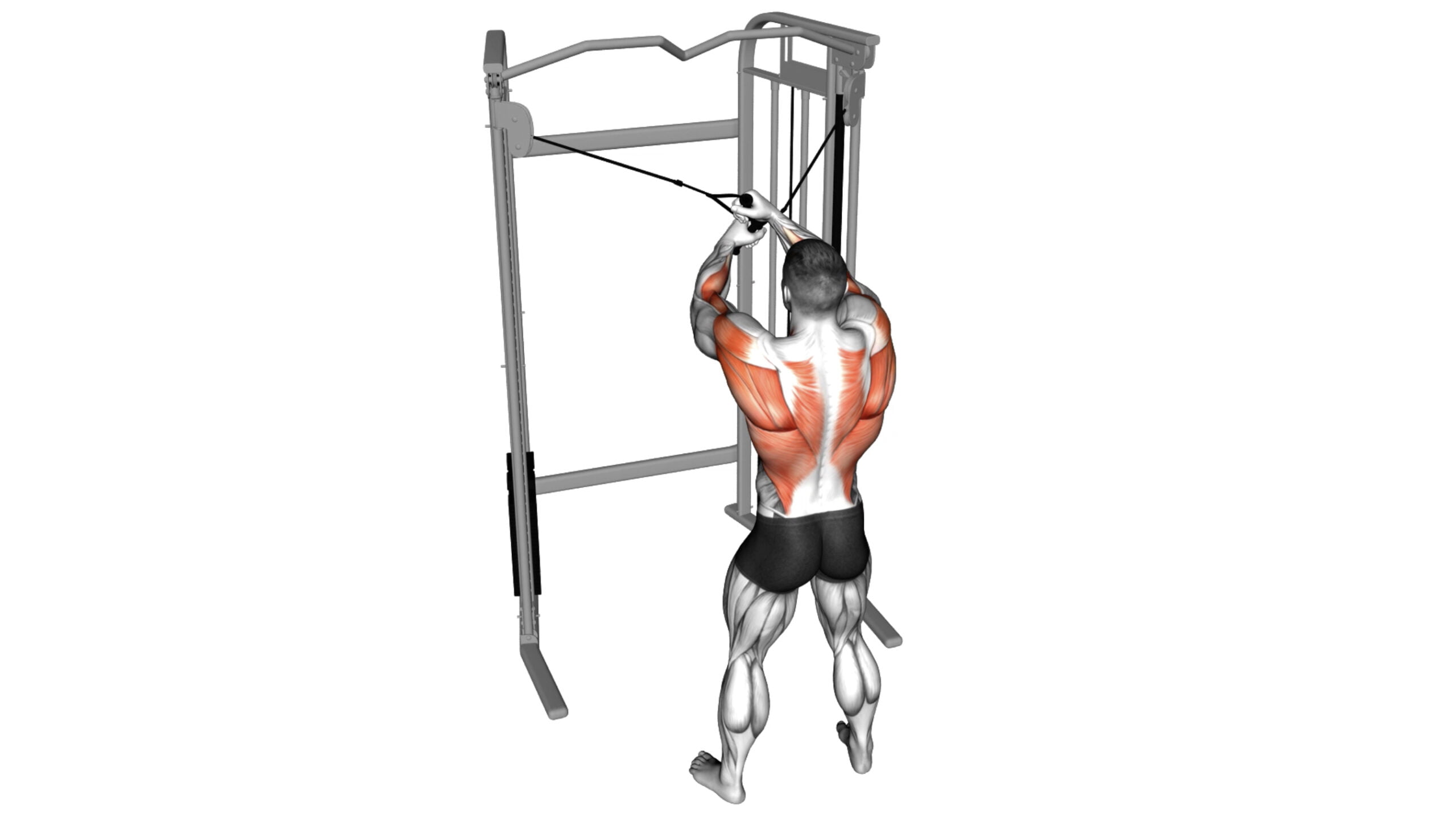
Understanding the intricacies of upper body strengthening often involves keen attention to smaller muscle groups that can make a significant difference in our overall fitness. One such area, frequently overlooked, is the teres major—a small yet mighty muscle situated just under your shoulder blade.
With over a decade of experience as a certified personal trainer and strength coach, I’ve seen firsthand how targeted exercises for this specific muscle group can enhance stability and power across various movements.
The teres major works intimately with its close neighbor, the latissimus dorsi, to facilitate important actions like pulling and lifting—crucial motions we perform daily. Focusing on exercises that isolate and strengthen these muscles not only paves the way for more defined shoulders but also contributes to an improved posture scenario that many seek.
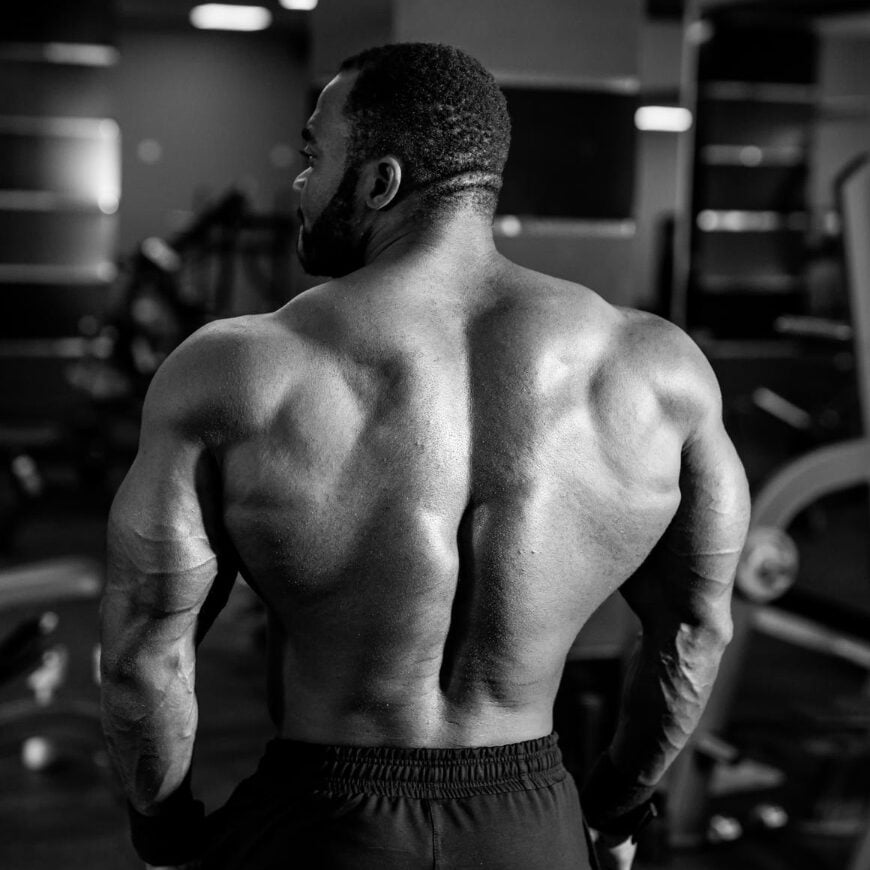
This article delves into ten meticulously selected teres major exercises designed to fortify your upper body resilience effectively. Read on and take charge of your workout routine.
Key Takeaways
- Engaging in teres major and minor exercises can improve upper body strength, shoulder stability, and reduce the risk of injury while performing everyday activities as well as during sports.
- Practicing proper form and posture is essential when conducting these exercises to effectively target the muscles and avoid strain or injury.
- Using appropriate weights for your strength level encourages muscle growth without compromising form; begin with lighter weights and increase gradually.
- A variety of equipment like dumbbells, cable machines, and resistance bands can be used to perform a range of exercises targeting the teres muscles from different angles.
- For optimal results in strengthening and toning the teres major muscle, incorporate a mix of 10 specific workouts into your fitness routine.
The Importance of Strengthening Teres Major and Teres Minor Muscles
Strengthening the teres major and teres minor muscles is essential for improving overall upper body strength and stability. These exercises help activate under-utilized muscles, improve circulation, expand range of motion, and reduce the risk of injury during physical activities.
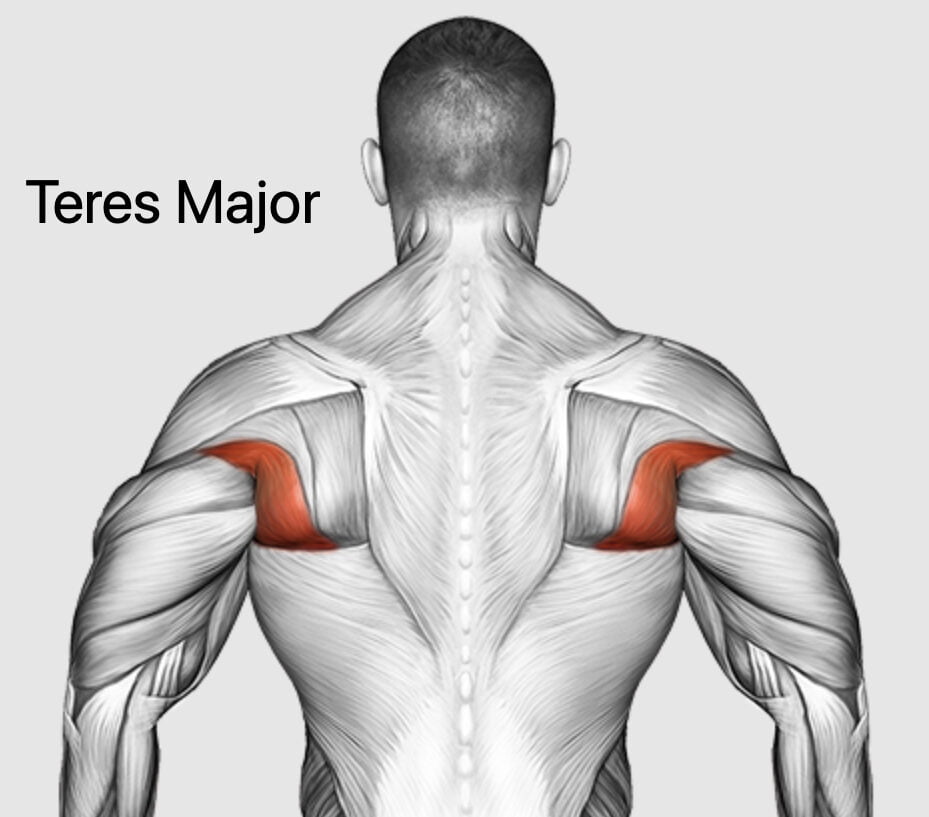
Increased activation in under-utilized muscles
Focusing on the teres major and minor muscles has a big payoff for your upper body’s strength and stability. These muscles play a key role in movements of the shoulder joint, yet they often don’t get the attention they need during routine exercises.
Including targeted workouts that activate these hidden gems can prevent shoulder pain by providing better support to the shoulder blades and rotator cuff. This activation also contributes to improved posture, which is essential not just for athletes but for anyone who spends long hours at a desk or performing repetitive tasks.
Regularly engaging these under-utilized muscles leads to gains in upper arm strength, making daily activities like lifting weights or carrying groceries feel effortless. It enhances flexibility, too, allowing you to reach further and move smoother without strain.
Say goodbye to awkward angles when reaching overhead – strong teres muscles mean your arms have a powerful ally in every motion from chin-ups to dumbbell flies. By unlocking the potential of these supportive players in our muscle lineup, we optimize our overall fitness landscape from shoulders down to hips.
Improved circulation and oxygen flow
Exercise isn’t just about building strength; it also enhances the circulation and flow of oxygen through your body. As you work on strengthening exercises for the teres major and teres minor muscles, you’re doing more than toning your upper back—you’re boosting blood supply to these areas.
This increased flow delivers essential nutrients faster, aiding in muscle recovery and repair after intense workouts.
Better blood circulation means your muscles function more effectively overall. When you focus on these muscle groups, not only do they become stronger, but their efficiency improves too.
You might notice this as a smoother movement in your shoulders or less fatigue when lifting heavy objects. Intense training sessions will leave you feeling revitalized rather than exhausted thanks to the optimized delivery of oxygen to those hardworking muscles.
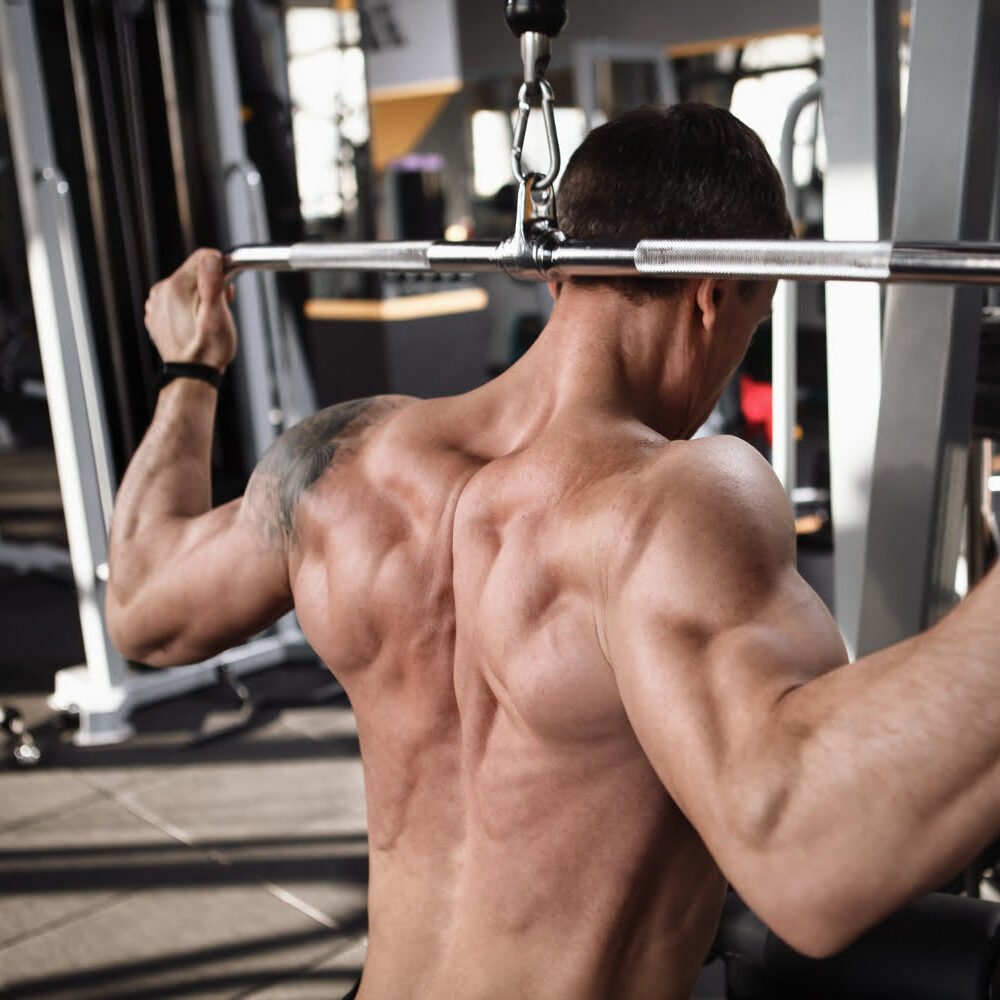
Expanded range of motion
Focusing on the teres major and minor muscles unlocks greater shoulder movement, essential for both daily activities and specific exercises. With a broader range of motion, you can perform lat pulldowns and rows with increased efficiency, allowing your upper body workouts to be more effective.
This not only enhances muscle activation during weightlifting but also supports healthier shoulder function.
Improving these muscles kicks your upper arm’s flexibility into high gear, letting you reach further and lift heavier without straining. The benefits extend beyond strength; they pave the way for smoother humeral head rotation in the glenohumeral joint, reducing the likelihood of common injuries like shoulder impingement syndrome.
Committing to regular training specifically targeting these muscles sets up a strong foundation for overall upper body development.
Reduced risk of injury
Strengthening the teres major and teres minor muscles significantly reduces the risk of injury in the upper body. These crucial muscles play a pivotal role in stabilizing and supporting the shoulder joint, ultimately lowering the likelihood of developing shoulder pain or injury.
By incorporating specific exercises targeting these muscles into your regular workout routine, you can effectively decrease the risk of injury while simultaneously enhancing overall upper body performance.
Top 10 Teres Major and Teres Minor Exercises for Strength
Discover the best exercises to strengthen and tone your upper body, and take your fitness routine to the next level!
1. Band Bent Over Lat Pulldown
The Band Bent Over Lat Pulldown is a resistance band exercise that effectively targets the teres major and teres minor muscles in the upper body. By engaging the back, shoulders, and arms, this exercise helps improve overall strength while toning these muscle groups.
Utilizing a resistant band and sturdy anchor point, it can be conveniently performed at home or in the gym. Proper form and technique are crucial to avoid injury and maximize benefits from this exercise.
Adding the Band Bent Over Lat Pulldown to your regular workout routine will contribute to enhancing upper body strength and muscle tone.
2. Cable Cross-over Lateral Pulldown
Transitioning from the Band Bent Over Lat Pulldown, the Cable Cross-over Lateral Pulldown is a valuable exercise for targeting the teres major and teres minor muscles in your upper body.
This dynamic movement not only enhances shoulder mobility and stability but also contributes to developing strength and definition in your upper back and shoulders.
Performed with a cable machine, this exercise ensures a smooth and controlled motion, providing effective isolation of the targeted muscle groups. As you integrate the Cable Cross-over Lateral Pulldown into your regular workout routine, expect overall enhancement in upper body strength as well as improved posture, increased shoulder stability, and a sculpted upper back.
3. Cable Close-Grip Front Lat Pulldown
Transitioning from the Cable Cross-over Lateral Pulldown, next up is the Cable Close-Grip Front Lat Pulldown. This exercise specifically hones in on targeting the teres major muscle, situated at the upper outer edge of the back.
Execution involves using a close-grip attachment on a cable machine, allowing for an extended range of motion and better isolation of the targeted muscles.
Engaging in this workout aids in enhancing strength and definition not only in the teres major muscle but also in other associated muscle groups like the upper back, shoulders, and arms.
4. Barbell One Arm Bent over Row
The Barbell One Arm Bent over Row is a pivotal exercise for strengthening and toning the teres major and teres minor muscles. By targeting these specific muscle groups, this unilateral exercise helps improve overall upper body strength and addresses any imbalances between both sides of the body.
This exercise also enhances shoulder stability and mobility, which can be beneficial in preventing injuries during daily activities or sports. Various grip widths or hand positions can be utilized to engage the teres major and teres minor muscles from different angles, promoting a well-rounded approach to upper body conditioning when incorporated into a regular workout routine.
Incorporating the Barbell One Arm Bent over Row into your training regimen can yield significant benefits by contributing to a balanced and sculpted upper body.
5. Cable Pushdown (straight arm)
Engage your teres major and teres minor muscles with the cable pushdown (straight arm) exercise. Ensure proper form by standing upright, gripping the cable bar with an overhand grip, and keeping your arms straight as you push the bar downward until your arms are parallel to the ground.
Focus on controlled movements throughout for maximum muscle engagement.
Challenge yourself by adjusting the weight to maintain resistance without sacrificing form. By incorporating this exercise into your upper body routine, you can effectively target these specific muscles, leading to increased strength and definition in your shoulders and upper back.
6. Dumbbell Pullover
The dumbbell pullover is an effective exercise for targeting the teres major and teres minor muscles in the upper body, which are crucial for overall strength and stability. It helps improve strength and tone in the back and shoulders, offering functional benefits for daily activities as well as athletic performance.
By incorporating variations and techniques into this exercise, individuals can effectively engage these important muscles from different angles while enhancing flexibility and mobility in the shoulders and upper back.
Performing the dumbbell pullover consistently can lead to enhanced upper body strength, improved posture, and reduced risk of injury by strengthening these often overlooked muscles.
7. Dumbbell Palm Rotational Bent-Over Row
Engage your Teres Major and Teres Minor muscles with the challenging Dumbbell Palm Rotational Bent-Over Row. Using dumbbells, perform a bent-over row with a rotational movement of the palms to target and strengthen these crucial upper body muscles.
This exercise offers various modifications to intensify muscle engagement and can be a valuable addition to your comprehensive upper body workout routine.
The Dumbbell Palm Rotational Bent-Over Row requires proper form, technique, and control for effectively engaging targeted muscles. Incorporating this exercise into your regimen can contribute significantly to achieving a well-rounded and toned upper body.
8. Dumbbell Split Stance Bent Over Row
To perform the Dumbbell Split Stance Bent Over Row, stand with one foot in front of the other and bend at the hips to bring your torso parallel to the ground. Hold a dumbbell in each hand, with arms hanging straight down.
Then, pull the dumbbells up towards your ribcage while keeping your elbows close to your body. Lower them back down and repeat for a set number of reps.
This exercise effectively targets the teres major and teres minor muscles, helping to improve shoulder stability and overall upper body strength. Engaging both muscles can lead to enhanced posture and reduced risk of shoulder injuries.
9. EZ-Bar Reverse Grip Bent Over Row
Transitioning from the Dumbbell Split Stance Bent Over Row to the EZ-Bar Reverse Grip Bent Over Row, this exercise continues to target the teres major and teres minor muscles in the upper body.
Using an EZ-bar with a reverse grip, you will bend over at the waist to perform rows that are effective for strengthening these crucial upper body muscles.
Performing the EZ-Bar Reverse Grip Bent Over Row improves strength and stability in the teres major and teres minor. It’s essential to maintain proper form while engaging these muscles by using moderate to heavy weights.
10. Inverted Row Bent Knees
Transitioning from the EZ-Bar Reverse Grip Bent Over Row, the Inverted Row Bent Knees is an exceptional exercise for strengthening and toning your upper body, with a specific focus on the teres major and teres minor muscles.
To perform this exercise, lie on your back and pull your body up towards a bar, engaging your back and arm muscles to complete the movement effectively.
This versatile compound exercise not only targets the teres major and teres minor but also engages the biceps, forearms, and upper back muscles. By adjusting the height of the bar and modifying your body angle, you can tailor this workout to suit varying levels of difficulty.
Proper Form and Techniques for Teres Major and Teres Minor Exercises
When performing teres major and teres minor exercises, it is important to use the correct equipment and maintain proper posture. Engaging the targeted muscles while avoiding common mistakes will help maximize the effectiveness of each exercise.
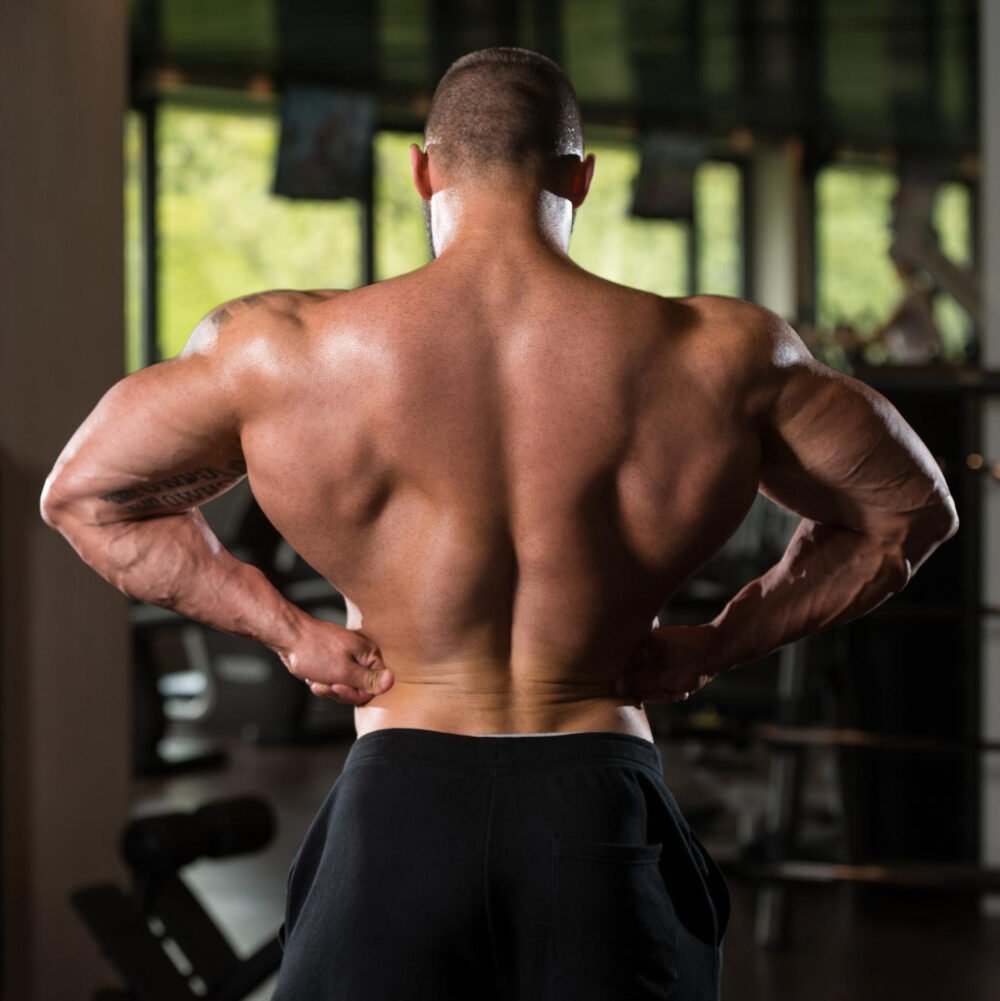
Use of correct equipment (dumbbells, cable machines, etc.)
Selecting the proper equipment such as dumbbells and cable machines is vital for targeting and engaging the teres major and teres minor effectively. Dumbbells offer a broader range of motion, allowing for precise resistance adjustment to suit individual needs.
Meanwhile, cable machines provide consistent tension throughout the exercise movement, promoting focused activation of the targeted muscles.
Utilizing bands can also be advantageous in isolating and strengthening the teres major and teres minor with controlled resistance. These variations enable individuals to tailor their workout experience while keeping constant tension on these crucial upper body muscles.
Maintaining proper posture
Proper posture is crucial for effective teres major and teres minor exercises. Engage your core muscles to keep your back straight during each repetition. Pay attention to the position of your shoulders and arms to ensure proper alignment when targeting these muscles.
Maintaining correct posture not only prevents injury but also maximizes the effectiveness of each exercise, helping you achieve superior results while minimizing strain on other muscle groups.
When performing teres major exercises, focus on keeping a neutral spine by activating your core and maintaining a straight back throughout each movement. Ensure that there is no excessive arching or rounding of the lower back to avoid unnecessary stress on this area.
Engaging the targeted muscles
Engage your Teres Major and Teres Minor muscles by focusing on maintaining proper posture and form during each exercise. Ensure that you use the correct equipment and choose suitable weights to effectively activate these targeted upper body muscles.
By engaging these specific muscle groups, you can reduce the risk of injury while maximizing the benefits of the exercises.
Activating your Teres Major and Teres Minor muscles throughout each repetition will help you build strength and tone your upper body effectively. Remember to concentrate on engaging these muscles as you perform each exercise, allowing for increased activation in under-utilized areas for a well-rounded upper body workout routine.
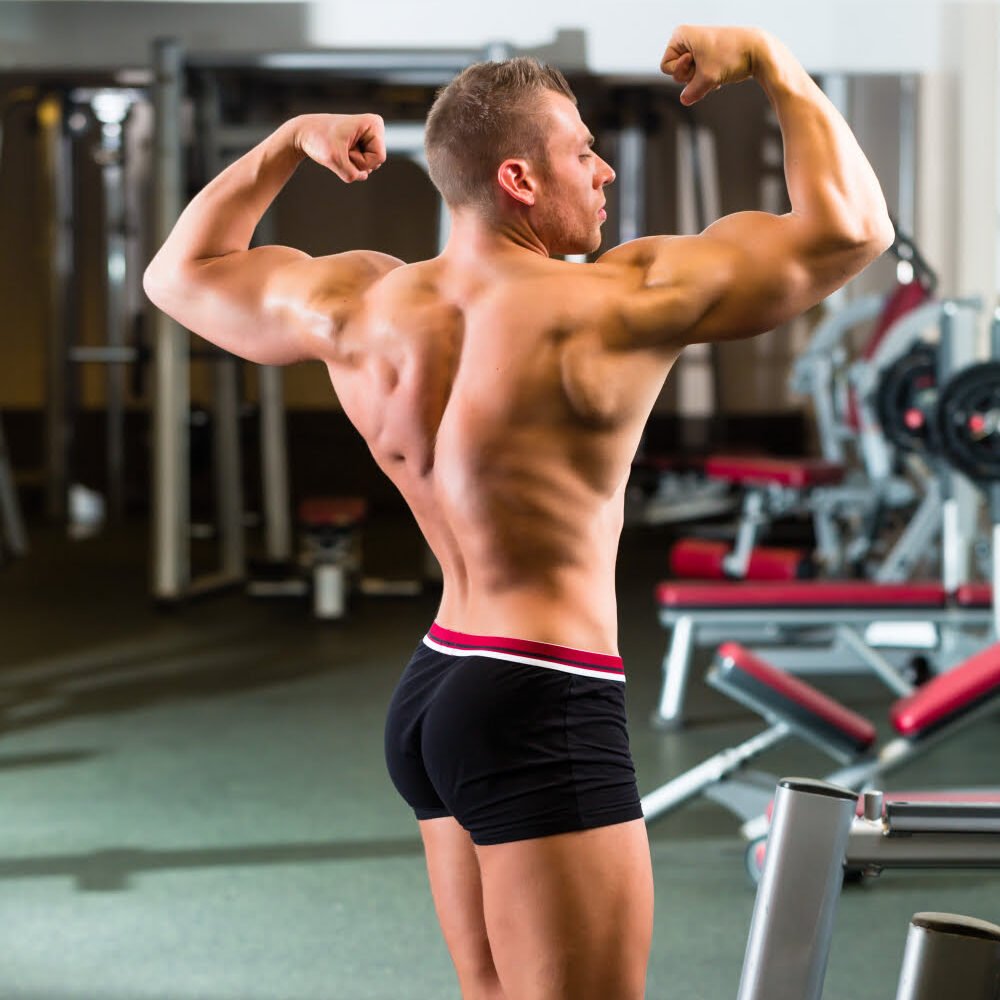
Common Mistakes
Many people make the mistake of using too much weight, sacrificing proper form and technique. Improper engagement of targeted muscles can limit the effectiveness, while failing to maintain neutral spine and posture may lead to strain on the back and shoulders.
Using momentum during exercises detracts from targeting muscles and increases the risk of injury. It’s important to have a proper warm-up or cooldown routine to avoid mistakes in form, technique, and an increased risk of injury.
Incorrectly engaging muscles decreases exercise effectiveness while high weights sacrifice proper form. Failing to maintain neutral spine leads to strain on the back and shoulders.
Choosing the right weight
To ensure the effectiveness of your teres major and minor exercises, it’s vital to choose the appropriate weight. Starting with a weight that allows you to perform each exercise with proper form and technique is key.
Consult with a fitness professional if needed to determine the ideal resistance for each exercise based on your current strength level and progression goals.
Gradually increasing the weight as you build strength will help challenge your muscles and promote growth. However, using excessively heavy weights may compromise your form, leading to potential injury.
Recommended Sets And Reps
To get started, beginners should aim for 2-3 sets of 8-12 reps per exercise using a light to moderate weight. As strength and endurance improve, consider a gradual increase in the number of sets and reps while incorporating heavier weights to continue challenging the muscles. Remember to include rest periods between sets for adequate muscle recovery and to prevent overtraining.
- Begin with band bent over lat pulldown: 3 sets of 10 reps
- Progress to cable cross-over lateral pulldown: 3 sets of 10-12 reps
- Try cable close-grip front lat pulldown: 3 sets of 8-10 reps
- Engage with barbell one arm bent over row: 3 sets of 8-12 reps per arm
- Incorporate cable pushdown (straight arm): 3 sets of 12 reps
- Experiment with dumbbell pullover: 3 sets of 10-12 reps
- Perform dumbbell palm rotational bent-over row: 3 sets of 10 reps
- Execute dumbbell split stance bent over row: 3 sets of 8-10 reps
- Challenge yourself with EZ-bar reverse grip bent over row: 3 sets of 8-10 reps
- Complete inverted row bent knees: 3 sets of 10-12 reps
Conclusion
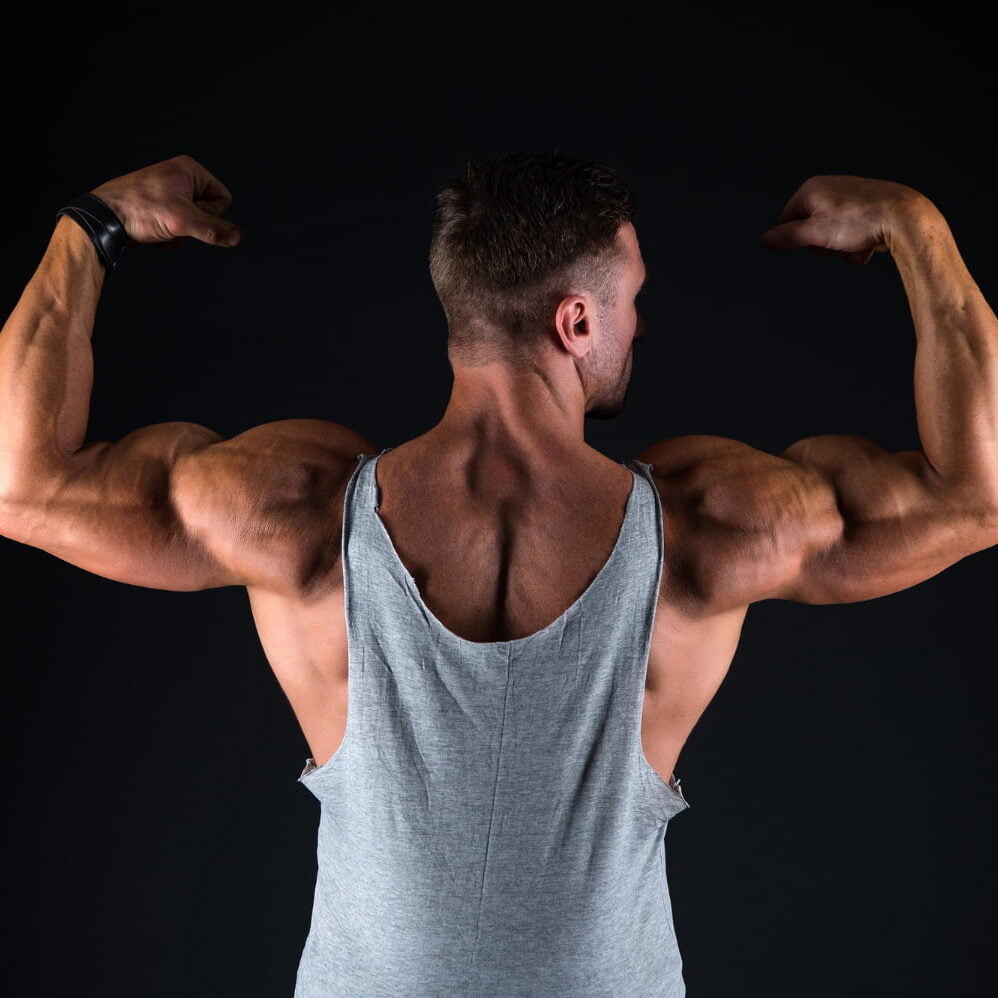
In conclusion, incorporating these teres major exercises into your upper body workout routine can significantly enhance strength and tone. These practical and efficient strategies target crucial muscles for a well-rounded upper body workout.
Emphasizing the importance of targeting the teres major and its impact on overall upper body strength is vital. For further guidance, consider seeking professional advice or exploring personalized training plans.
Remember that consistency and dedication in executing these exercises will yield remarkable results over time.
FAQs
1. What are some effective exercises for targeting the teres major muscle?
Incorporate movements such as chin-ups, pull-ups, and lat pull-downs to effectively engage your teres major. These exercises also work on your lats and biceps. To isolate this muscle further, try dumbbell fly or incline fly movements that focus on adduction and medial rotation of the upper arm bone.
2. How do teres major exercises benefit my overall upper body strength?
Strengthening the teres major contributes to a more stable shoulder joint by working in tandem with rotator cuff muscles like infraspinatus and subscapularis. Engaging in these workouts will enhance your ability to perform weight-bearing tasks and can improve posture by balancing anterior muscles like pecs with posterior structures including rear delts.
3. Can exercising the teres major help alleviate shoulder pain?
Regularly performing stretches and strengthening routines targeting the rotator cuff group, which includes the teres major, may relieve tension in trigger points that lead to discomfort. It’s crucial to include these activities as part of a comprehensive program aimed at preventing tendinitis by maintaining mobility through well-regulated external rotation and retraction motions.
4. Are there specific free-weight exercises for focusing on my teres major?
Yes! Utilize free weights during movements like chest press or dumbbell fly to target not just pectoralis major but also deeper layers around scapula including serratus anterior which aides retraction along lateral border of scapula assisting with ideal dynamic shoulder blade motion critical for healthy function.
5. What role does warming up play before doing intense upper body workouts?
Warming up primes your muscles for exercise; it increases blood flow particularly important when working out complex joints such as shoulders where supraspinatus or levator scapulae must be flexible enough to support various ranges from abduction to full extension keeping you safe from injury while exercising.
6.What should I focus on during my workout routine if I want stronger shoulders?
Focus on incorporating compound moves such as bench presses or squats that activate multiple groups simultaneously aiding growth across entire regions instead isolating one small area adding functionality plus aesthetically rounded look acknowledging value both glutes stretching might offer after sessions ensuring recovery better performance over time.

Author
Years ago, the spark of my life’s passion ignited in my mind the moment I stepped into the local gym for the first time. The inaugural bead of perspiration, the initial endeavor, the very first surge of endorphins, and a sense of pride that washed over me post-workout marked the beginning of my deep-seated interest in strength sports, fitness, and sports nutrition. This very curiosity blossomed rapidly into a profound fascination, propelling me to earn a Master’s degree in Physical Education from the Academy of Physical Education in Krakow, followed by a Sports Manager diploma from the Jagiellonian University. My journey of growth led me to gain more specialized qualifications, such as being a certified personal trainer with a focus on sports dietetics, a lifeguard, and an instructor for wellness and corrective gymnastics. Theoretical knowledge paired seamlessly with practical experience, reinforcing my belief that the transformation of individuals under my guidance was also a reflection of my personal growth. This belief holds true even today. Each day, I strive to push the boundaries and explore new realms. These realms gently elevate me to greater heights. The unique combination of passion for my field and the continuous quest for growth fuels my drive to break new ground.





